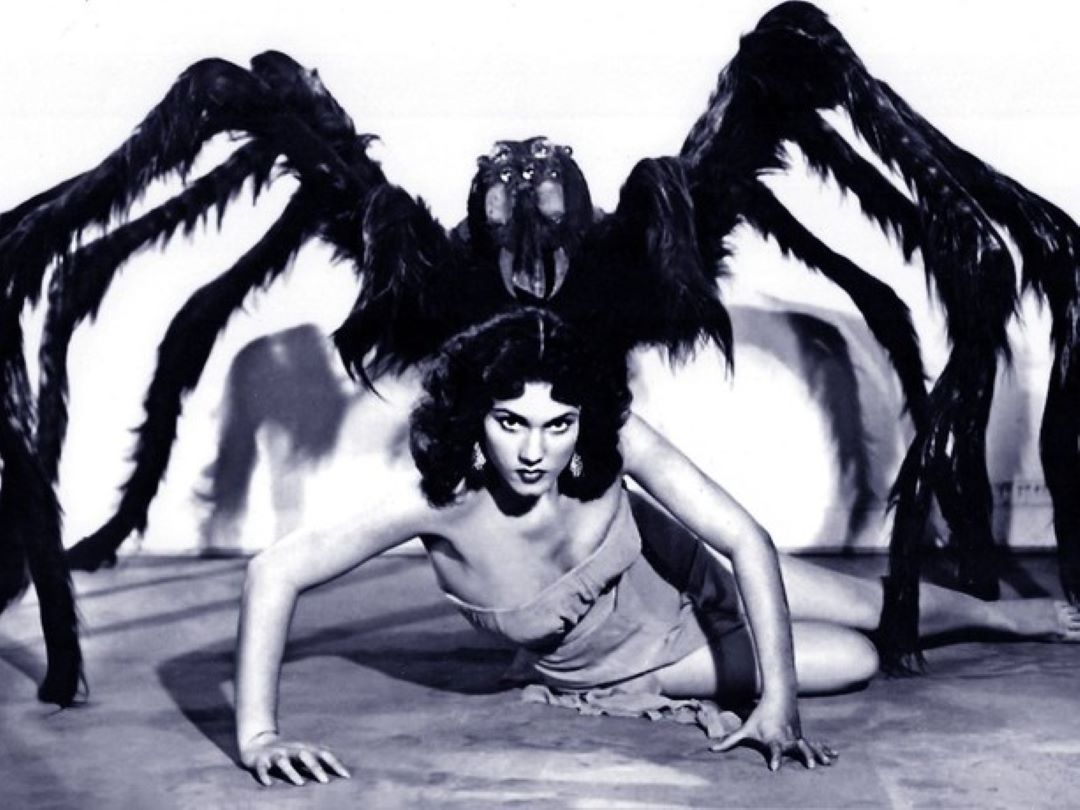They creep, they crawl, they freak me the f*ck out while editing this stuff! It’s the return of the giant spider movie reviews by Hawkzino, and alongside his ongoing mission to make me itch all over, he aims to bring you new insights into this multi-legged genre. This time it’s Mesa of Lost Women from 1953.
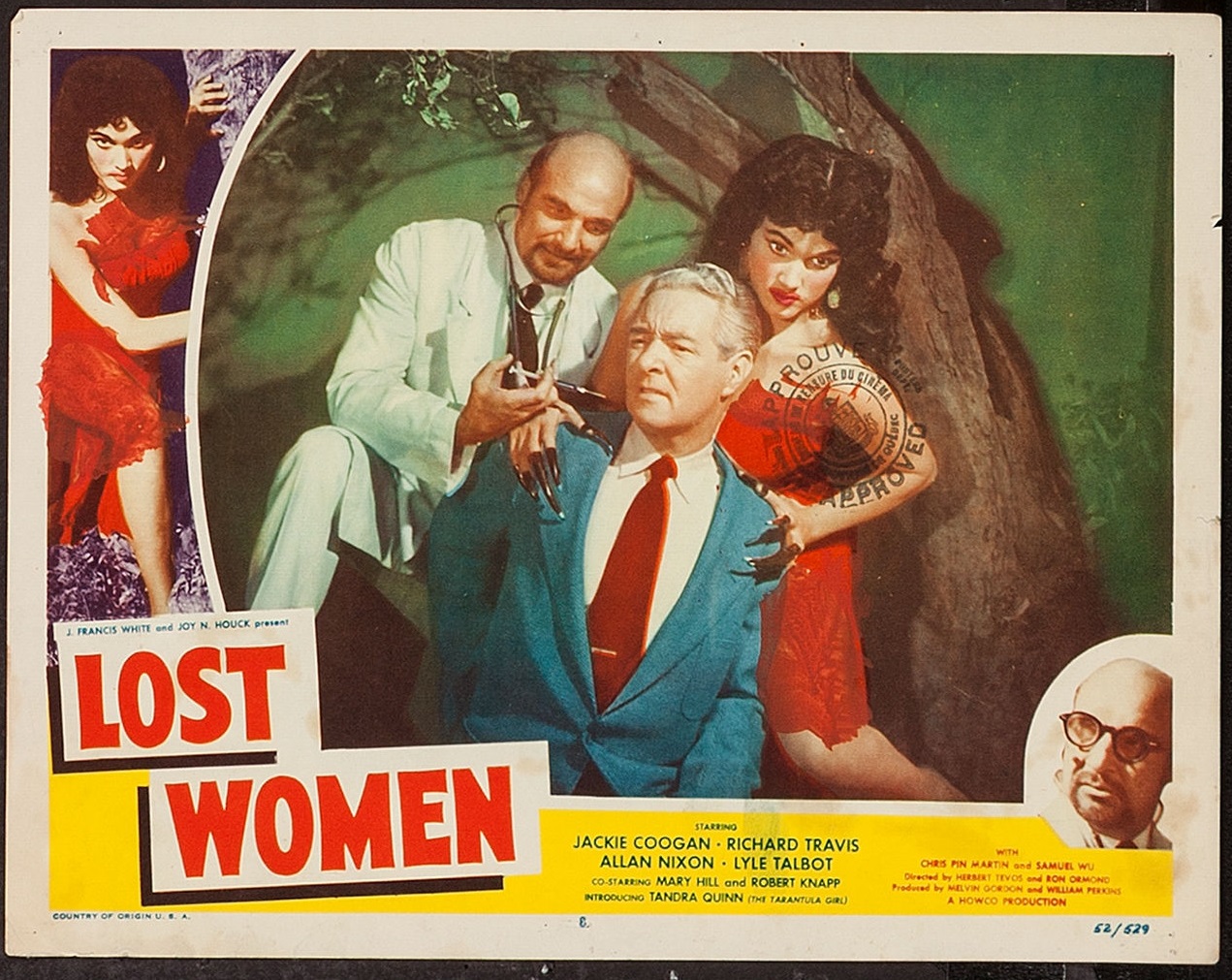
Mesa Of The Lost Women
Although I consider 1955’s Tarantula to be the first proper giant spider movie, this patchwork quilt curiosity was released two years earlier. It features a stiff-looking family-sized tarantula as well as a bunch of attractive women with spider brains who possess the ability to re-grow limbs and live for hundreds of years. We don’t see that bit, so we’ll just have to take the mad scientist’s word for it.
Perhaps I should start from the beginning. The movie opens with a flamenco guitar soundtrack that doesn’t shut the fuck up for almost the entire 69-minute runtime. An unsuspecting man called Dr Tucker is kissed by a woman with very long fingernails. He collapses, presumably dead.
She breaks the fourth wall and stares at the camera like a crazy person. A narrator asks: “Have you ever been…by a girl like this?”
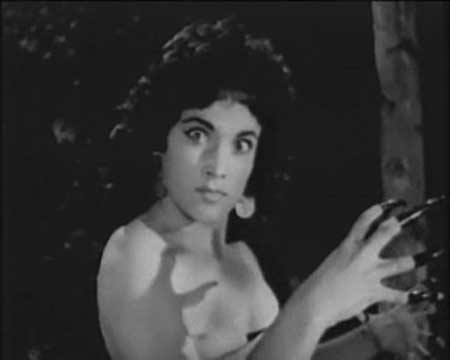
I replayed the scene but the verb in that sentence was definitely missing. It appears that the version I watched skipped a few frames, and the missing word was ‘kissed.’ I suppose I should have figured it out from the contextual clues. Anyway, it’s a pointless question because the answer is always going to be ‘no.’ If anyone had been kissed like that, they’d be dead and wouldn’t be here to answer in the affirmative, would they?
After the credits, we see a woman and a man stumbling through the Muerto Desert in Mexico (which means Desert of the Dead – ooh scary). The narrator drones on and on about how mankind sucks and how insects could beat us in a fight (I’d like to see them try). The monologue goes on for two minutes and I wondered who the narrator was supposed to be.
He speaks in a foreboding tone – think Vincent Price in the Thriller video – and seems like an omnipotent being of some kind. An alien? A pissed-off God? Whoever he is, he states that the two people who have strayed from the well-trodden path will die because nobody escapes the DESERT OF THE DEAD!!! Then they get rescued and taken to hospital, which undermines the narrator’s credibility somewhat.
At the hospital we meet Dr Tucker again, so this must be before his fatal kiss. The two rescued people are Grant and Doreen. Also present are their rescuers, Frank and Pepe. Pepe is a Mexican stereotype who wears a sombrero and says ‘aye caramba!’ unironically.
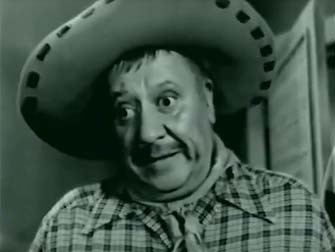
Grant wakes up and starts telling a story about a mad scientist’s secret laboratory on ZarpaMesa. By the way, a mesa is a flat-topped hill in the desert with steep sides. I didn’t know that before I watched the movie, so I thought I would mention it in case you are as dumb as me.
Anyway, the camera slowly zooms in on Grant as he speaks and it looks like we’re about to dissolve into a wavy flashback, but then the camera pans up to Pepe! The narrator pipes up again, talking directly to Pepe (“Quite a story he’s telling, isn’t it Pepe?’).
Pepe looks around the room as if he can hear him, and then we get the wavy dissolve. We don’t return to the hospital until the very end of the movie so the whole story appears to be Pepe’s flashback, except for one small problem: he isn’t in it. At all.
The issue they have is that Grant doesn’t come into the story until later, so he’s unable to tell the first part of the flashback. But Pepe can’t tell it either. He’s just heard some vague stories about the Zarpa mesa, which the narrator reminds him about before metaphorically grabbing the mic and telling the story himself. It’s really the narrator’s flashback. Who is this guy?
Nominative Determinism
The flashback, which is most of the movie, starts a year earlier. Dr Masterson, a ‘world-famous specialist in research’ (sounds convincing) visits Dr Aranya at his laboratory on the Zarpa mesa. ‘Aranya’ means spider in Catalan, so the fact that he grew up to be a mad scientist experimenting on spiders is either one heck of a coincidence or the best example of nominative determinism I have heard in a while.
In case you didn’t know, nominative determinism is where you end up doing a job that fits your name, like the chef Tom Kitchinor and the porn star Eric Everhard.

Don’t believe in nominative determinism? Just remember that TWO Spider-Man movies were directed by Marc Webb.
I’ll concede that perhaps Aranya changed his name after becoming obsessed with spiders. He names one of his hot female experimental subjects ‘Tarantella,’ which is consistent with that theory. But if his surname was Aranya all along, the poor guy didn’t stand a chance.
I mean…his last name is ‘spider,’ what else is he going to do with his life other than isolating the growth hormone from the anterior pituitary gland and implanting it into tarantulas so they reach human size, develop reasoning powers and the ability to communicate telepathically, and then transplanting the gland back into humans to create indestructible women with spider instincts? Can’t exactly work in McDonalds, can he?
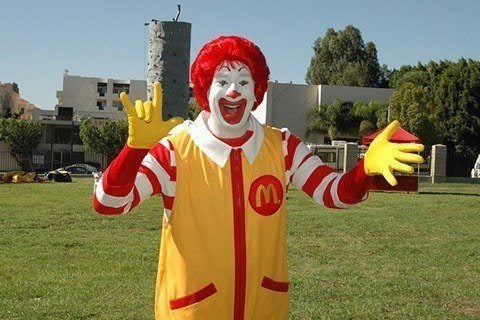
The Evil Plot Is Overexplained
Aranya’s ultimate plan is to create a giant spider with a human brain to control the world, under his command of course. What next? Attaching frickin’ laser beams to their heads? This guy was a Bond villain before it was fashionable.
At this point we see a giant spider drape its leg over a changing screen on the other side of the room. I’m assuming this wasn’t intended to be sexy because it isn’t. Aranya pulls back the screen to reveal the giant tarantula, which has a bandage on its head, presumably from the brain transplant. You’ve got to love that attention to detail.
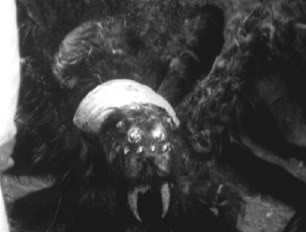
One more thing about the experiments: whilst they work on women, they aren’t as successful on men, who become misshapen dwarves. This is because male spiders are ‘puny things,’ and this is reflected in their human-spider hybrid versions. The future is female! Aranya was a feminist before it was fashionable.
Unsurprisingly, Masterson is horrified by the sheer amount of exposition being dumped on him, as well as the ethical concerns. He vows to stop Aranya but Tarentella injects him with a drug that turns him into a cotton-headed ninny-muggins. Next thing we know, he has been found wandering in the desert (the Desert of Death fails to claim another victim).
The Great Escape
Masterson is placed in an asylum called Muerto State Asylum. Wait, they’re using ‘muerto’ again? Muerto means ‘dead,’ so it’s called Asylum of the Dead? Why does everything have to sound like a lost George A Romero movie?
Masterson escapes from the asylum. Well, would you stay in the Asylum of the Dead? Usually, these places are called Forest Pines or Spring Meadows and sound like air fresheners. Anyway, in the next scene, he walks into a bar on the USA/Mexico border, wearing a suit and bowler hat, carrying a wallet full of cash and a gun. Presumably, he had all that in his possession when he escaped out the asylum’s high window using bed sheets as a rope.
A typical 1950s movie couple walk into the bar, and by that I mean a young woman/old man. They are supposed to be getting married in Mexico but are having engine trouble with their private plane (we’ve all been there).
Masterson sits at their table and takes a shine to the woman, Doreen (remember her? She’ll be stumbling around in the desert later). The drugs are still affecting Masterson because he seems both senile and sociopathic at the same time.
Tarantella is also at the bar for some reason and begins a sexy dance. Tarantella is the name of a wedding dance in Italy so that nominative determinism is working its magic again. The scene vaguely reminded me of Salma Hayek’s bar dance in From Dusk ‘til Dawn. If you haven’t watched that scene before, please do so, and if you have, watch it again, you know you want to.

I’m speculating, but it doesn’t seem impossible that Tarentella’s dance was viewed by a young Tarantino and used as inspiration for FDTD. I also just noticed how similar their names are, but I’m entering conspiracy territory now.
The dance drags on, taking up five minutes of the movie’s 69-minute runtime. I was relieved when Masterson pulls his gun and shoots her.
Just before that, Masterson’s nurse, George, arrives and sits at their table. He’s been tracking Masterson but does nothing to stop him shooting Tarantella. He could have intervened – he’s a big guy and Masterson is a simpleton. Instead, he puts all his energies into dissuading others from stopping Masterson, saying how much of a badass killer he is. He acts like his hype man, so nobody intervenes as Masterson kidnaps George, Doreen, and her husband-not-to-be, Jan.
Also caught up in this little adventure are Grant (remember him?), the pilot of Jan’s private plane, and Wu, Jan’s Chinese manservant (two letters, that’s good. My arm’s cramping up from having to type too many Mastersons).
If you’re wondering whether Wu’s ethnicity is treated with more nuance than Pepe’s, I’ve got some news: Wu calls Jan ‘master,’ speaks almost entirely in proverbs, refers to himself in the third person, and betrays them.
The Great Betrayal
Wu’s betrayal of his master is an odd story development. At the bar, he tells Jan that the plane needs repairing and exchanges knowing nods with Tarantella, suggesting that they are involved in a plot to ground the plane. Later on, it transpires that they are working together to return Masterson to Aranya.
After the kidnapping, Masterson forces them to take off before the plane is repaired. Grant notices that the gyrocompass has been tampered with and they are flying off course. The camera cuts to a guilty-looking Wu. It appears that Wu has fixed it so they will fly towards the Zarpa mesa, and the engine just happens to last the exact amount of time required to get there.
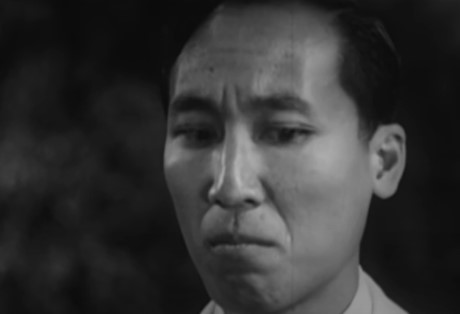
I’m struggling with this, so let’s break it down from Wu’s perspective. Here’s his step-by-step plan for bringing Masterson back to the mesa once he escapes from the asylum. Don’t forget that he has only two days’ notice to implement this, which is the time that elapses between the escape and Masterson arriving at the bar:
Well, it works. This is not a serious movie. You probably had your suspicions.
What A Fine Mesa You’ve Got Me Into
They land on the mesa and Grant complains about being 600 feet above ground level with no easy way off. So why didn’t he land on the ground? It’s a desert. It’s not like he has to dodge skyscrapers on the way down.
They set up camp and pass around a bottle of spirits. Nobody offers Wu a drink. I’m starting to see why he betrays them. George wanders off and is killed offscreen, presumably by the spider because he has bite marks on his neck. The others hear his scream and set off to find him. We are treated to three minutes of slow sideways scrolling as the group walks to the left in single file through the trees in near darkness to the sound of flamenco guitars.
After finding George’s body, they turn around and walk back the way they came, and we get another 2.5 minutes of them walking to the right. The only break from this is a few random cuts to dwarves and spider-women spying on them from the jungle.
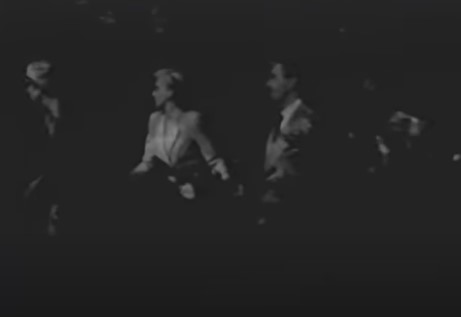
Jan is bitten by something unseen on the way back. Minor bites are usually a death sentence in giant spider movies, but nothing happens, it’s pointless. If I was being kind, I’d say they were subverting expectations, but that would assume the moviemakers knew what they were doing.
Combgate
Grant and Doreen have an awkward conversation by the fire where she accuses him, without cause, of thinking she’s a gold digger. She then admits that she is one (I guess it was playing on her mind). Grant says he wants a girl who wants him for what he is, not what he has. Well, he would say that, wouldn’t he?
He’s poor. It might sound romantic, but it’s not like he has a choice. She seems to fall for it though, and they share a kiss.
Doreen spots the dwarves spying on them and wakes the camp. We then get the worst plot point of the film, and that’s saying something. It concerns a lost comb.
Never mind about all the weird people in the jungle, there’s a far more pressing problem to deal with: Doreen has lost her comb and Jan wants it back because it’s a valuable family heirloom (this is a comb we’re talking about). Jan sends Wu to find it, in the jungle, at night. Wu runs off to Aranya’slair but is betrayed by the doctor and killed because I don’t know.
Grant finds Wu’s body in the jungle, but the good news is he’s clutching the comb! Thank goodness, I wouldn’t want his death to be in vain. Jan feels guilty and runs away from camp when he finds out. The stiff-looking tarantula jumps on him, which is the only giant spider action in the whole movie. It’s poor, but Jan’s blood-curdling scream is excellent.
The Final Showdown
Grant, Doreen, and Masterson are abducted by the spider people and taken to Aranya. Amazingly, Tarantella is present. We see her come back to life after being shot (she’s practically indestructible, remember? At least they bothered to foreshadow it). But she must also possess Flash-style super speed to beat a plane back to the mesa.
Anyway, Aranya gives Masterson another injection to make him sane again (WTF?) because he wants to give him one last chance to work with him. Unsurprisingly, the newly revived Masterson hasn’t changed his mind.
Doreen wrestles with Tarantella and Grant restrains Aranya while Masterson brews an explosive. Three other spider women just stand there and do nothing to intervene. It’s terrible. Grant and Doreen escape and Masterson sacrifices himself to blow up the lab and everyone in it, including the giant spider, which we see lying next to Aranya’s body.
I must note that the first scene of the movie, where Dr Tucker is kissed by Tarantella, is never explained. I suppose we must assume that, after the movie ended, curiosity got the better of him and he visited the mesa, which raises the possibility of a sequel. However, that was three-quarters of a century ago. I think we’re safe.
Wait, But There’s More…
I don’t tend to delve too much into the production side of these giant spider movies and prefer to review the movie as presented. However, in this case, it is worth exploring its troubled production because it explains most of the terrible plotting.
Mesa Of The Lost Women was originally titled ‘Tarantula’ (no relation) and was far more straightforward. There was no omnipotent narrator, no hospital scenes bookending the movie, no awkward flashbacks, no Pepe, no Dr Aranya and no spider-women. When you strip all that out, what’s left is a linear tale of a crazy criminal (Masterson) shooting a dancing girl in a bar, abducting a couple who are in the wrong place at the wrong time, and using their transport to flee to Mexico, where they encounter a monster.
Holy shit, I just described the plot of From Dusk ‘til Dawn!

In the original version, Tarentella was a dancing girl who stayed dead after being shot. Wu wasn’t plotting with anyone and was merely a faithful servant who died looking for a comb in the jungle. It finally makes sense (apart from the comb thing).
The original movie wasn’t feature-length, and the footage they had was abysmal, so they added all the mad scientist stuff to pad it out. But the original movie possessed a solid structure, even though it was badly executed. All they needed to do was flesh out what they already had and add a few more spider scenes. Talk about over-complicating it.
But let’s ignore all that. As I said, I judge these movies at face value, and in that spirit, I would like to solve the mystery of the narrator’s identity. I have a theory.
Remember when Dr Aranya transplanted a human brain into a giant tarantula? Remember when he said this somehow enabled telepathic communication? Well…what if the narrator is the spider? Let’s say it survived the fire and is telepathically communicating to the characters, as well as reading their minds, which is how he can tell their backstories as well as his own. He hates humans and thinks he can beat them in a fight. It makes some sense at least.
I rate Mesa Of The Lost Women 1/5, or 2 spider legs out of 8 (after generously rounding up).


